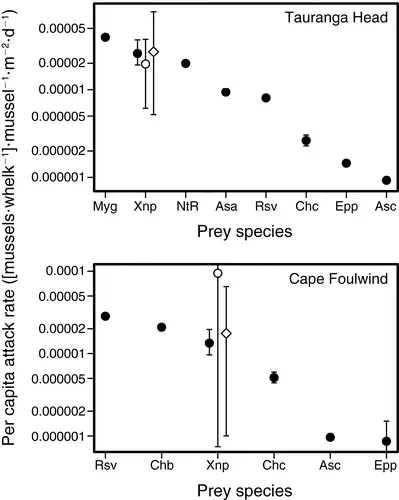Estimating interaction strengths in nature: experimental support for an observational approach

Abstract
The complexity of food webs poses a significant hurdle for our growing understanding of the structure and dynamics of ecological communities. Empirical methods that measure the per capita strengths of trophic species interactions offer a means to identify keystone species and bridge mathematical models and data to synthesize our knowledge of population dynamics and predator feeding behaviors. Many such methods have been proposed, but few have seen independent validation of their estimates or underlying assumptions. This is particularly so with respect to the nonlinear functional responses by which predators often respond to their prey. Here I describe an empirical test of a recently proposed observational method for estimating the nonlinear strength of predator–prey interactions in the field. By applying the method to two populations of a predatory intertidal whelk, Haustrum scobina, I estimated its per capita attack rates on all nine of its observed prey species. These spanned two orders of magnitude in per capita strength. Concurrent experimental manipulations of the two predator populations provided population time series for the response of a mussel prey species, Xenostrobus pulex. I obtained independent interaction strength estimates for this focal interaction by fitting a sequence of hypothesized predator–prey models to these time series. Overall, site‐specific models assuming linear functional responses performed better than all others. A direct comparison of the attack‐rate estimates from the observational method with those of the best‐performing nonlinear model nevertheless revealed high concordance between the two methods. The results of this study therefore support the use of the observational method in larger and more complex food webs and suggest that trophic interactions in the range of mean prey densities observed in nature are approximately linear.